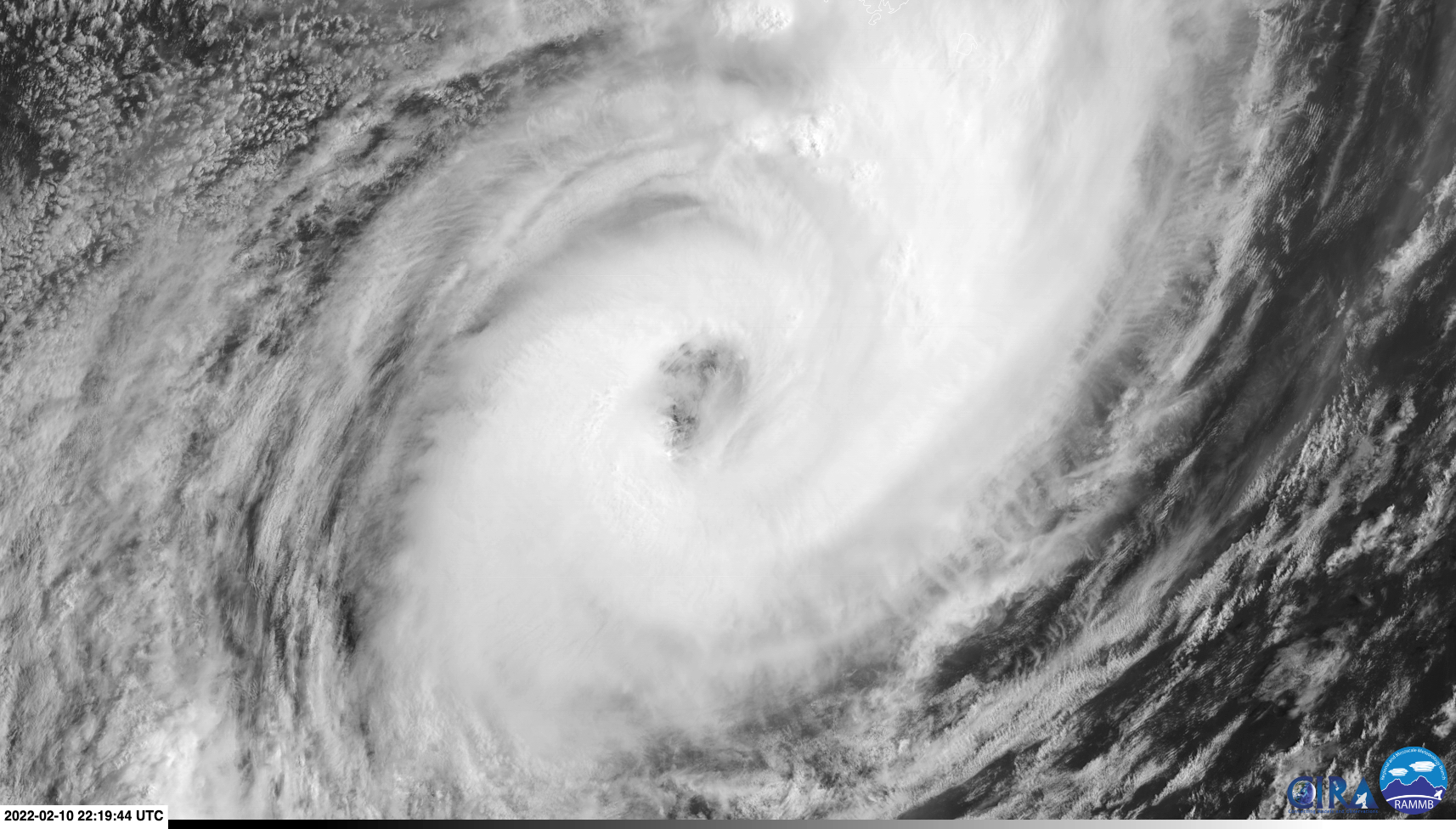Severe Tropical Cyclone Dovi threatening Norfolk Island
Tropical Cyclone Dovi will lash Norfolk Island tonight after rapidly intensifying to the south of New Caledonia during the last 24 hours.
The sequence of satellite images below shows Dovi moving towards the south between New Caledonia and Norfolk Island on Friday morning.
Cyclone Dovi was only a category one system on Thursday morning, but after rapidly intensifying overnight, it became a category three severe tropical cyclone on Friday morning.
At 8am AEDT on Friday, Severe Tropical Cyclone Dovi was located about 250 kilometres south of Noumea and 530 kilometres north northwest of Norfolk Island. The powerful cyclone has a large and ragged eye, which can be seen clearly in today’s imagery from the Himawari-8 satellite.

Image: Severe Tropical Cyclone Dovi at 9:20am AEDT on Friday, February 11, 2022. Source: SLIDER by RAMMB/CIRA
The eye of Tropical Cyclone Dovi was around 70-80km wide on Friday morning based on satellite imagery. This is unusually large for a tropical cyclone, with eyes typically measuring about 10-60 km in diameter. The eye of tropical Cyclone Tracy, which was a very small but powerful cyclone, only had a diameter of 12km.
Dovi will continue moving south and should maintain its current strength as a category three system when it passes to the west of Norfolk Island tonight.
According to the Bureau of Meteorology’s Tropical Cyclone Advice, Norfolk Island could see gale force winds with damaging to destructive wind gust on Friday night into Saturday morning. Damaging surf will also develop from today as the large cyclone moves closer to the island.
After grazing past Norfolk Island tonight, Dobi will transition from a tropical cyclone to an extratropical low pressure system and head towards New Zealand. This track will not only slam New Zealand with heavy rain and dangerous winds, but also send a large and powerful swell towards Australia’s east coast during the next several days.
Be sure to check the latest warnings on Norfolk Island, in New Zealand and along Australia’s east coast for the most up-to-date details in the next few days.